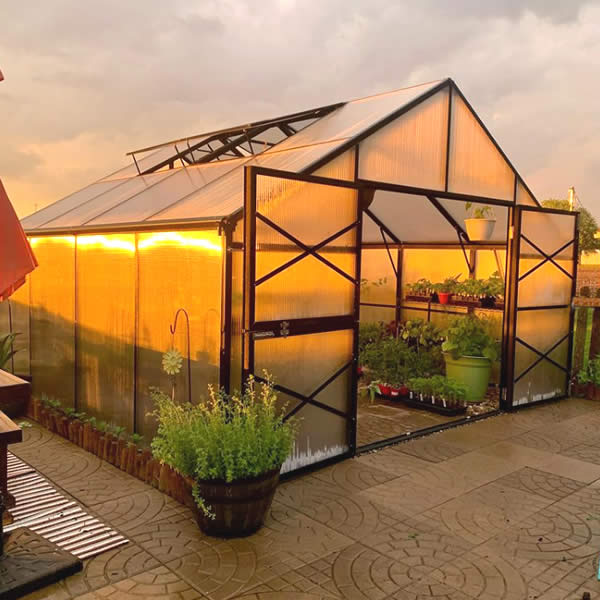The Future of Greenhouses: Technologies in Lasting Farming
Are you interested regarding the future of greenhouses and just how they are changing lasting agriculture? Look no more! In this post, we will certainly check out the interesting technologies that are leading the way for a greener and a lot more efficient farming market. From innovative environment control systems to vertical farming techniques, water-efficient watering approaches, eco-friendly power integration, and wise information analytics, these advancements are changing the method we grow our food. Prepare yourself to uncover the future of lasting agriculture in greenhouses!
Advanced Environment Control Equipment
To accomplish optimal growing conditions, you can count on the improvements in greenhouses with sophisticated environment control systems. These systems have transformed the method we grow plants, offering a regulated environment that is favorable to plant development. With these ingenious systems, you can now manipulate temperature, moisture, light levels, and even carbon dioxide focus to create the perfect problems for your plants to flourish.
One of the essential functions of these innovative climate control systems is their ability to manage temperature level. By utilizing sensors and automated controls, the greenhouse can readjust the temperature level based upon the details requirements of the plants. This ensures that they are never subjected to extreme warmth or cold, which can be detrimental to their development.
Humidity control is one more vital aspect of these systems. By maintaining the suitable moisture degrees, you can protect against problems such as mold, mold, and illness from impacting your crops. These systems can also manage the quantity of light that reaches the plants, ensuring that they receive the optimal amount for photosynthesis.
Additionally, advanced environment control systems can even adjust carbon dioxide focus. By boosting the levels of carbon dioxide in the greenhouse, you can improve plant growth and performance. This is specifically beneficial in locations with reduced natural CO2 levels.
Vertical Farming Methods
One crucial vertical farming technique is making use of piled expanding systems. Monarch Farm Greenhouse Utah. These systems entail arranging plants in numerous layers, up and down piled on top of each other. By making use of upright area, farmers can maximize their plant return without calling for added land. Stacked growing systems are generally utilized in urban areas where room is limited.
One preferred technique is called vertical hydroponics, where plants are expanded in nutrient-rich water without soil. This method is very reliable as it reduces water usage by as much as 90% contrasted to standard farming approaches. Furthermore, given that the plants are expanded indoors, they are shielded from parasites and illness, decreasing the need for pesticides.
Another technique is aeroponics, which involves putting on hold the plant origins in a mist or air environment. This technique enables optimum nutrient absorption and oxygenation, causing faster development and greater returns. Aeroponics additionally utilizes much less water than conventional farming and can be executed in vertical systems, making it a preferred choice for vertical farming.
Water-efficient Watering Approaches
Maximizing water conservation is vital when it comes to applying water-efficient irrigation methods in lasting agriculture. With worldwide water shortage a knockout post becoming a pushing concern, it is essential to develop innovative methods that maximize water use in greenhouse procedures.
One encouraging method is drip irrigation, which provides water straight to the plant origins, lessening waste and evaporation. By utilizing a network of tubes with little emitters, water is applied gradually and precisely, guaranteeing that plants get the essential moisture without excess overflow.
One more efficient method is making use of soil dampness sensors. These tools determine the dampness content in the dirt and give real-time information to farmers. By monitoring the dirt's moisture degrees, farmers can properly determine when and just how much water to use, preventing over-irrigation.
Additionally, the execution of rainwater harvesting systems is obtaining popularity in greenhouse farming. Gathering rain from rooftops and storing it in storage tanks allows farmers to utilize this natural deposit for irrigation objectives, decreasing reliance on typical water resources.
Last but not least, the fostering of automated irrigation systems can substantially enhance water effectiveness. These systems utilize sensors to find soil wetness degrees and climate condition, changing watering timetables as necessary. click this By optimizing water use based on real plant needs, these systems can lower water waste and promote sustainable farming practices.
Renewable Resource Integration
Eco-friendly energy assimilation in greenhouses uses several advantages, including decreased operating prices and lowered dependence on non-renewable power resources. The created power can after that be used to run different operations within the greenhouse, such as lighting, ventilation, and heating systems. These generators harness wind power and transform it into electricity, which can be made use of to supplement the power demands of the greenhouse.
Smart Data Analytics and Automation
To boost the performance of your greenhouse procedures and maximize source application, consider executing wise information analytics and automation. Smart information analytics entails accumulating and evaluating data from numerous sensors and devices within your greenhouse.
Automation, on the various other hand, involves utilizing innovation to automate tasks that were formerly done manually. This can include automating the control of illumination, ventilation, watering systems, and nutrient distribution. By automating these processes, you can ensure that your plants obtain the best problems and nutrients at the right time, without the demand for continuous manual intervention. This not only conserves you time and initiative yet also lowers the risk of human error.
Furthermore, clever information analytics and automation can work together synergistically. The information gathered by sensing units can be utilized to educate computerized systems, allowing them to make real-time modifications based on the existing Visit Website problems. This assimilation of information analytics and automation can bring about extra reliable and exact resource allowance, inevitably causing greater yields and much better plant quality.
Verdict
In verdict, the future of greenhouses in lasting agriculture looks promising. With sophisticated environment control systems, vertical farming strategies, water-efficient watering approaches, and renewable power combination, greenhouses are ending up being much more eco pleasant and reliable.

By optimizing water use based on actual plant requirements, these systems can lower water waste and advertise sustainable farming practices.
